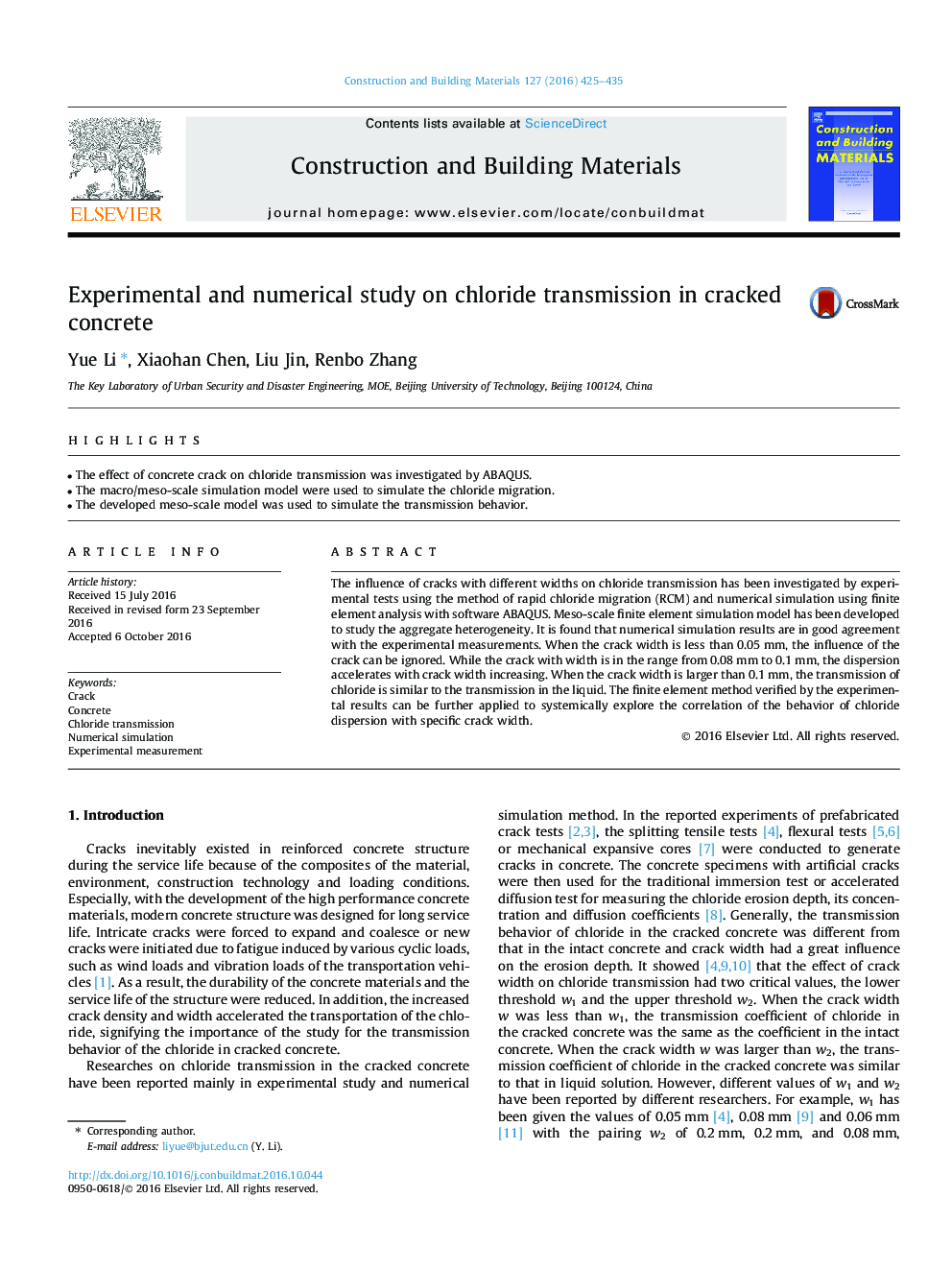| Article ID | Journal | Published Year | Pages | File Type |
|---|---|---|---|---|
| 4913955 | Construction and Building Materials | 2016 | 11 Pages |
Abstract
The influence of cracks with different widths on chloride transmission has been investigated by experimental tests using the method of rapid chloride migration (RCM) and numerical simulation using finite element analysis with software ABAQUS. Meso-scale finite element simulation model has been developed to study the aggregate heterogeneity. It is found that numerical simulation results are in good agreement with the experimental measurements. When the crack width is less than 0.05Â mm, the influence of the crack can be ignored. While the crack with width is in the range from 0.08Â mm to 0.1Â mm, the dispersion accelerates with crack width increasing. When the crack width is larger than 0.1Â mm, the transmission of chloride is similar to the transmission in the liquid. The finite element method verified by the experimental results can be further applied to systemically explore the correlation of the behavior of chloride dispersion with specific crack width.
Related Topics
Physical Sciences and Engineering
Engineering
Civil and Structural Engineering
Authors
Yue Li, Xiaohan Chen, Liu Jin, Renbo Zhang,
